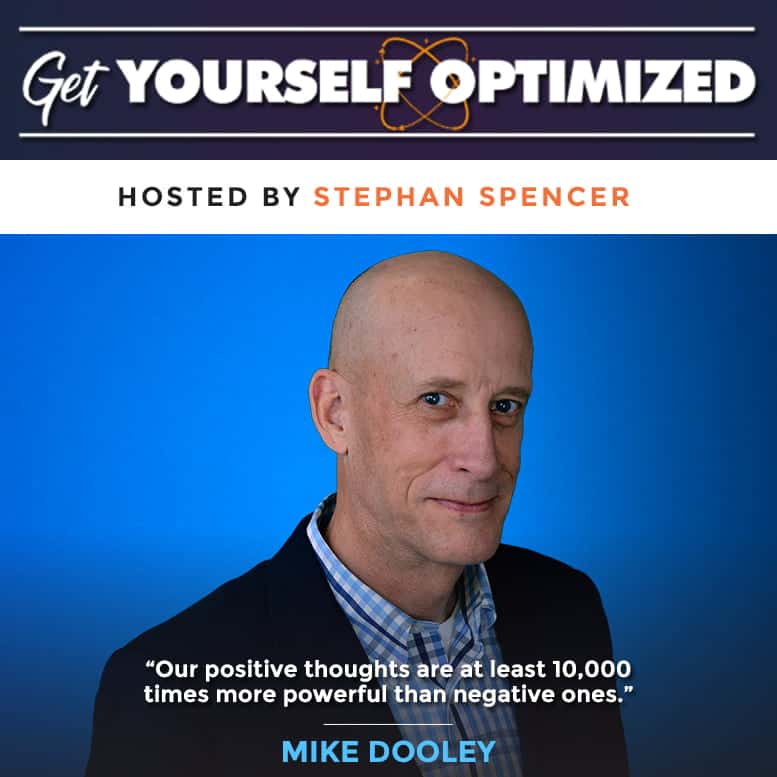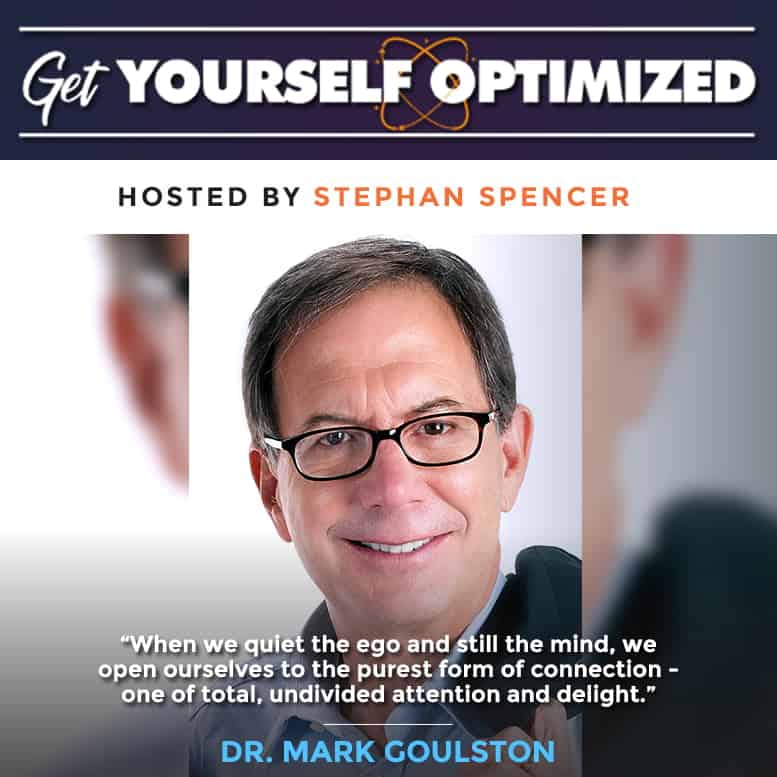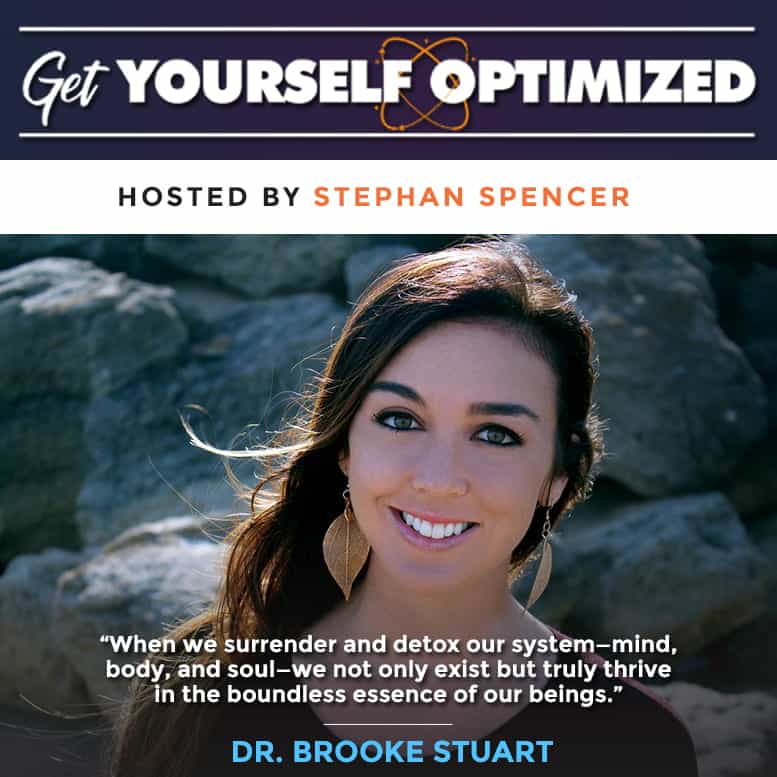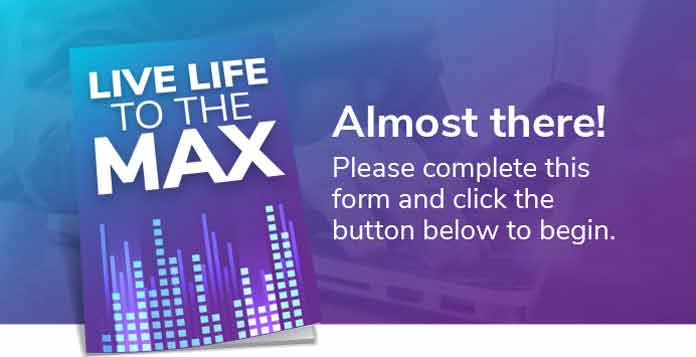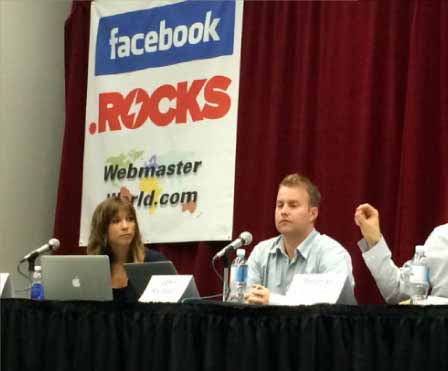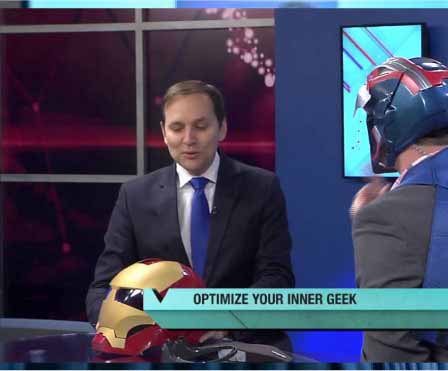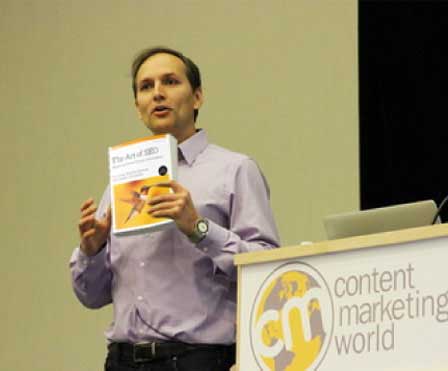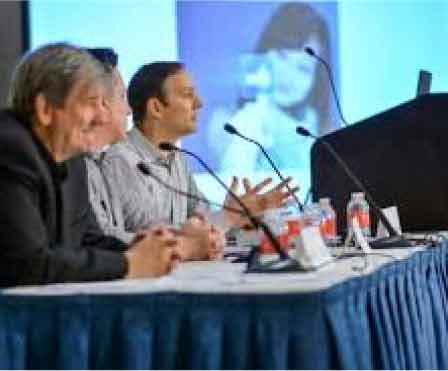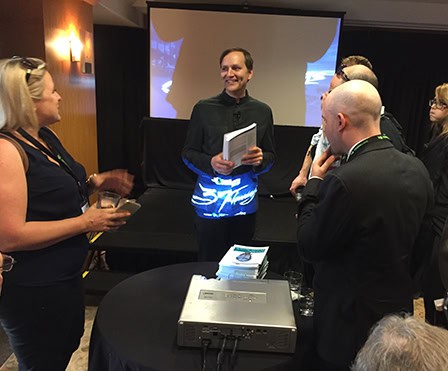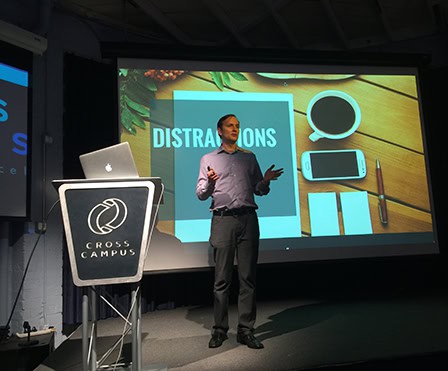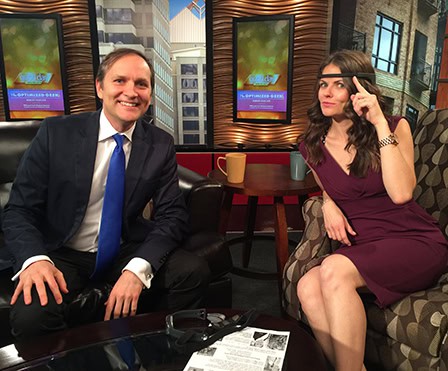Transcript
Anat, it’s so great to have you on the show.
I am so happy to be on the show. Thank you so much for having me.
Let’s start off by explaining to the listeners, what is NeuroMovement?
NeuroMovement is a method that I developed. It basically accesses the enormous potential of the brain to create new connections, and as a result, new patterns will improve the things that we can do already if somebody wants to run better or play the piano better or whatever people do, and learn new things.
I work with high performers and people who are recovering from injuries. I trained many practitioners. We also work with children with special needs. It covers that scope. Mentally, what I’ve discovered while working with five days old to nine years old, when we wake up our brain to resume the process of creating new connections and configurations, the general health improves tremendously. There’s quite a bit of brain research now that shows that if you are able to get the brain going through a more positive brain change, all the physiological markers will get better.
Physiological markers, as in what?
Blood pressure, the composition of the blood, the response time to stimulus. It was done by Dr. Michael Merzenich and his team on aging populations. They took 60 or 80 markers. They did it on rats that were close to dying and they got their brain to start doing this process again. They live, on average, 40% longer. For people, it wouldn’t be so much because we have much longer lives or at least, but they recovered their cognitive capabilities, physical strength, and dexterity – which they lost. They couldn’t do the maze and things like that.
That sounds really fascinating. We’ll talk more about that later. You mentioned that you worked with children with special needs, people who are in pain, athletes, and musicians. Walk us through a few different cases and how your approach to neuroplasticity and brain health can help those different types of people.
Movement is the language of the brain. Click To TweetYeah, because you’re being polite, it sounds a little bit like snake oil, right?
No. I’m all about the willing suspension of disbelief. I think that my listeners get that by now that whenever I have a guest on, they assume that I’ve done my due diligence, that I get good people on, and then they set their skepticism aside. I believe that a skeptic and a cynic are basically two sides of the same coin. I never want to be a cynic and I hope my listeners don’t want to be, either. Skepticism is so close to that if that makes sense.
It 100% makes sense. When I started doing the work, especially with the high performers more – musicians, dancers. I used to be a dancer, a clinical psychologist, and I have some science educational background. This opportunity just landed in my lap, so to speak. With the kind of outcome the kids started getting, I tried to talk to doctors. The parents wanted me to talk to doctors and the doctors said, “No, it must have been a misdiagnosis or spontaneous recovery.” They said that I’m skeptical. One day I looked at one of them. I said, “You think being skeptical is being smart?” I said, “it’s actually the opposite.” Real scientists when they see evidence, they get curious, not skeptical. I’ve been delaying into this but now it’s a lot easier. In the beginning, it was challenging.
I’ll start with musicians because I’ve worked with San Francisco Symphony, with the Boston Symphony, people in the music festival, and some of the very well-known names – mostly the classical music domain. I get the musician. Usually, they go to me because they have pain and it starts getting in their ability to play, perform, and have their job.
Nothing would qualify me as a musician but I had some musical training as a child, and I would watch them play. I couldn’t do what they could do, but when I watch them play, I could see from the way they use their body. I have the image of what their bodies, so to speak, have in their brains. That means that a newborn has no voluntary control movement. It goes through an enormous amount of movement experimentations, permutations, variability – to gradually figure out how to, for example, use the hand to grasp a toy.
That process doesn’t change throughout life. If you want to do something better, which means in a different way or something new, we always have to go through the process again. So, when I watch them play, I look at how they map their body or their body is mapped in their brain, and what the brain “knows” that is there and what it leaves out.
For example with the musicians, their hands are very densely mapped in the brain and they have an enormous amount of dexterity and a lot of configurations, rhythms, speed and all that stuff, and intensities like soft, loud and all that stuff. They have an enormous amount of all those dimensions. But in many of them, the lower back and the pelvis area, in terms of mobility and coordination, that’s the area that should generate proportionally the maximum power within any movement because any movement that we do is simultaneous throughout the whole body or we couldn’t have continuous movement.
I would see that they were brilliant with their hands, quite good around the elbows and the shoulders are starting to look a little sad. When I get to the chest and the lower back, by just observing them, it was missing in action, literally. It was just held stiff, undifferentiated and didn’t contribute to the movement. It interfered with the forces that were going through the joints, which creates the inflammation.
I used to work with them in batches when I was in Tanglewood. The string players, the pianists, together with the different more frontal symmetrical kind of instruments, this includes the singers. Sometimes within one or two sessions, I took them through certain movement lessons where they became aware and got certain dynamic relationships and connections between the different parts of the body, the pain will disappear and the playing – the quality of the sound and the music that they were generating – improve instantaneously and dramatically. As musicians, they got it more into music level and movement level but they were interested in doing the movement level because they could hear the difference and they felt better – the pain went away. That’s one example.
We’ll come back to this idea of people’s shoulders looking sad and stuff because my posture needs some work. And a lot of information workers – people who are on the computer a lot – have this problem with their posture, sagging shoulders, and the head being more forward than is healthy. We’ll come back and talk about that, but keep going. This is great. That’s the case for a musician. Now, how about dancers and people who are more elderly? Their bones are potentially more brittle, might have osteoporosis. Let’s go through a few more use cases.
Dancers. I was one and I worked with them. Seriously, they were the first population that I worked with. I was a student in Israel and I was working in the Academy of Music and Dance. There, I was working with the dancers and I was trained as a dancer. Dancing is also parallel to sports in a lot of disciplines. You take a person that can do something, you show them what they’re supposed to do, and you ask them to do it.
You look, you are put by the bar, and told, “Do this movement with your leg, lift it top, on the front, on the side, this stay straight, don’t sway.” You’re getting corrections. It is the same thing with the athletes, how they should hold the ball. You are given the instructions on how you should do it.
It works quite well for very few people. You get very large numbers of people that go through the experience in school, in private places, in training and so on – very few rises to the top. Also, those that rise to the top—I’ll talk about it in a second after I finish this idea—had a career than they could have had because of how they learn to do what they do well. They do very well and get great outcomes but what’s behind that?
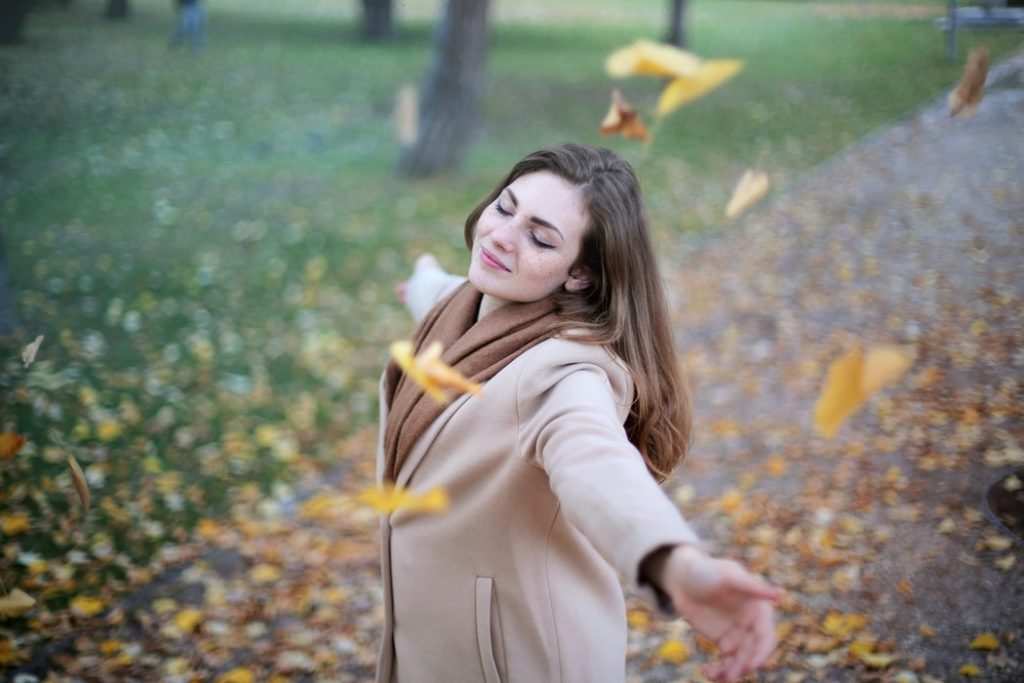
How I work with dancers is the same way I work with the skier or baseball player. It doesn’t matter because the way I teach people, I don’t teach them in the usual sense but I take them to a process whereby I don’t actually show them the right thing to do. I know where we’re heading and I take them through a lot of movements and variability that I know there’s a concept of differentiation. You need to move the arm a certain way if you think of golf, in the same relationship to the pelvis, the head should stay centered, and the disc.
Things have to move, one relative to the other, in greater and greater complexity and refinement, if you want to be really good at anything you do. If you’re a writer, anything you do gets to a higher level. It is arriving and continuing to go towards greater and greater complexity and refinement. Refinement doesn’t mean you can’t get a lot of power but it is the way that it’s done.
I work with the dancers. I get them away from what they’re habituated. Because when you do the same thing over and over again, the brain gets very habituated. That’s how it’s built. That’s why most people are intermediate skiers and I’m one of those. Repeating the same thing over and over again will make you just a really solid intermediate skier. I got myself out of it but I was like everybody else. I just got to that level and that was bad.
I want to introduce the concept that underlies my NeuroMovement approach. It has nine essentials which are ways or conditions that when you bring them into the process, it will immediately reopen the conversation or reopen the brain to start creating new connections and improving. What I do with the dancers, I would have them do different movements that were novel to them. We do it very gently because it’s not about force or power, it’s about communicating through movement with the brain literally.
Movement is the language of the brain. Movement is the mechanism through which the brain grows, organizes itself, and so on. I take them through different movements that I know are important, that they’ll have those configurations in order to perform their desired outcome. Then, I have them do the desired outcome and without exception, they can do it better or can do it for the first time.
It was not easy with the dancers. I was very hesitant when I started doing it and I just was all gung-ho and I didn’t realize the emotional impact it would have on them. They were so attached to standing, looking at themselves at the mirror, trying to have visual feedback and being told what to do – most of them were stuck at that certain level. Then, I would have them do all these different movements that are completely outside of their repertory of dance — classical, arthrogram or whatever. It scared some of them because they weren’t used to it.
My very first essential is movement with attention. You’re cognizant of the movement you’re doing. You guide yourself, but the attention is to the feeling of self as you move. You actually pay attention to how you feel as you do the movement. Doing this very quickly, you get trained to get the feeling of being a powerful guide to you, how to continue doing it. You start searching for the feeling that comes with the movement while organized. It’s a very wonderful sensation, it feels really good, and we’re trained to override it. We’re trained to keep going. We’re trained to push. We’re literally trained to dissociate from the information that comes to us that we could work with. That’s what I do with dancers and it’s very effective.
Just a quick story. It was one of the top dance troupes in the United States, a really well-known troupe. It was a bunch of years back and I was teaching and training. One of my students was a coach who worked with those dancers. She brought the principal dancer, female principal dancer because she had a problem. There’s a movement called arabesque. When they stand, they lift one behind them and keep lifting it. On one side, she could do very well. On the other side, she had a limitation. And at a certain point, she also had some pain.
I had her join my group in a movement lesson, about 45 minutes that was nothing like that she would have experienced during her dance training. Then, I worked with her one-on-one for 10 minutes. For years it’s been a problem. It was her thing. She’s a great dancer but that was the thing she didn’t do well. In 10 minutes, she could lift her leg. I remember it was left, I guess it was the right one. She was actually quite stunned and it’s a mixture of being happy and a bit depressed. She realized that she could have done that sooner, but that’s an example of how it could work.
The potentiality of the brain is amazing. This is why I do this work because I get surprised all the time. I didn’t know when her leg would lift higher or when it will do it or how it would happen. I just knew that I was helping her feed her own brain with information that opened the possibility for it to happen. That is a very different approach than the usual teacher-student or healer and the person being healed. Actually, there are quite a few healers that know you have to activate the healing mechanisms in the other. You don’t heal people. You just have the talent of helping them heal themselves.
Just the numbers, the sheer hugeness of the system, and it’s a self-organizing system. It’s not pre-programmed. It has certain things that have strong tendencies but even genetics, now we know the epigenetics, we’re so responsive to our experience and the most responsive organ to the best of my understanding is the brain.
If we go to older people, one of the drivers of aging is habituation. That means people learn how to stand, how to walk, how to talk. People have certain thoughts that they repeat over and over again, which is no different from moving your arm the same way over and over again and having the same emotions over and over again.
We need habits. We couldn’t function without habits. You can’t learn everything from scratch every morning. But within that, there is room to stay vibrant and be in the process of change. So, we have the habits, but we also have the other side operating in us. But that has to be done intentionally because the brain is happy to do what it already knows. It’s easy, it’s fastest, it’s reliable. We survive – the survival mechanisms are happy. That’s why I’m doing this podcast with you because there’s room to understand, and your audience is already inclined in that direction.
When we wake up, the brain needs to start creating new connections so that we can get stronger, healthier and our immune system works better. I work with people in general. I know myself, I used to have colds and bronchitis twice a year. When I started doing this work, I stop having that. I don’t think I have bronchitis forever.
The children I work with, many of them have issues, both brain damage or genetic issues that stop them from their spontaneous and normal development. Many of them are weak. They get sick a lot. As they do the work, very quickly they get fewer colds. Now, I haven’t done research in it but I measured and observed it for many years.
People in their 20s, the research has been done on that. The balance and posture of people in their 20s are starting to deteriorate but nobody notices it because they are strong, vital, and capable enough. Most people should start building by then. Because when you get to be 40, 50, 60, 70, 80… then, there are only those freeways that you created way back and there are no back roads. There are no new roads coming.
If you can visualize for a moment an older person walking, the upper back gets a little rounder and rigid. There’s no more twisting in the back. Turning around is very hard. The stance of the feet gets wider and wider to support the stability because the brain can’t adjust quickly for the need to stabilize the body. We have a heavy head on top, so we are very inclined to fall. We’re built to be very unstable. That’s what gives us a lot of freedom to move whereas other animals can’t.
The aging can be reversed within, literally, minutes. Not do the whole job in minutes but within 15–30 minutes a day, once a day, four times a week. There will be huge changes. I’ve worked with quite a few people, older people. My father, who’s just turned 100, took my training program, which is a massive amount of his work in his early 70s and he just started a whole new life.
When real scientists see evidence, they get curious not skeptic. Click To TweetHe’s clearly aging and it has to do with something medical but his latest invention when he was 93 years old and it looks like it’s going to be a successful startup. He’s a startup. It looks like he’s moving in the right direction. He’s a scientist, he’s a biochemist, and my brother is running it. We’re the geriatric young people. It’s something like that. Then the children, that’s where I find myself doing most of the work because the demand by the parents is just growing really quickly. The outcomes we get are outside of what is considered by most doctors possible.
By the way, we’re going to be showing a documentary film that somebody did about my work with four top neuroscientists. It talks about a beautiful young woman athlete who had a stroke at 28. We got her after she finished her rehab. She was not in good shape. Then, there’s a little one, two years old, that had serious brain damage at birth. It’s very inspiring, but then we also talk about the essentials and the scientists talk about why they think this works. I
This documentary, what’s the name of it?
I like that.
This guy, this beautiful young man, filmmaker, his childhood friend had this baby. She herself is a speech therapist. She did the traditional stuff and he was the child. The film is going to be out there, Nash and his mom Ellie and Geordie is the filmmaker. For a year-and-a-half or two, they did the traditional stuff and it was not getting anywhere.
Then, she discovered the Anat Baniel Method NeuroMovement. She went to a local person in Saskatchewan, Canada that trained with us and he started coming to life. He started moving, he started learning, his brain figured out how to do its job a little better. Then, she came to California and worked with us at our center and so on and so forth – all the way to the boy running and talking. It’s remarkable. Both she and her husband became practitioners. It’s very moving.
The other one is Tessa. She was a cheerleader for the NFL and she just had a devastating stroke. They didn’t find her for a day-and-a-half, so the damage was quite substantial on the left side of the brain. She made remarkable progress. Geordie got inspired and just decided to make this film and now we have this film. So, here we are.
Amazing.
That’s wonderful and I can send you a brochure. With the aging, just using movement, together with the nine essentials, which is movement with attention. It’s not just movement. We know that exercise and movement already improve cognition, improves health measurement, and people feel better. But the movement done with the nine essentials potentiates the process in absolutely remarkable ways that are in older people or people that are not babies. Then the children are just amazing to watch and because I got to work with children. I wasn’t trained to work with children. It’s important that I start from my background in what I said. I trained with Dr. Feldenkrais. Dr. Feldenkrais was a remarkable genius, he was a physicist who is an athlete, and he had an injury, and he looked to find the way to be able to continue doing his sport without making the surgery. It was his knee and he wouldn’t have been able to do the sport the way they did the surgeries then.
He figured out that it’s the brain that tells the body how to move. He gets apprenticed through experiences of movement, but then he figures it out, and then he controls the movement. He launched a personal journey of trying to see how he could communicate with his brain, so it will figure out how to move differently than before, so he could keep doing his Judo, playing soccer and all this stuff. He was a black belt in Judo and all kinds of things.
I trained with him. He’s the one that decided he saw whatever he saw, that I should work with children. He was a lot older than me, I was very young. He passed away and I had to figure it out. There was no road map. I learned what I learned from him, but there was no road map. I started observing things and looking at what works and what doesn’t work, that’s how I came up with the nine essentials.
Children were able to do things that were supposed to really not happen. Certain genetic disorders, children get capabilities that are outside the norm in a significant way. I’ll give you an example because there’s so much of it now. Autism – eating is one of the things children on the autism spectrum find tough. They won’t eat anything except for one or two foods. I would work with them and they started seeking out different foods. I didn’t work with them on the food part. I didn’t even expect this to happen, but then I saw it with one child, and a second child, and a fourth child, and a tenth child, and I went like I guess when the brain works better, somehow the digestion is doing better.
In the last 10-15 years, people started becoming aware of the brain gap connection, but mostly from the gut to the brain. Not so much how the brain influences the gut. People know that if you’re upset, anxious, or things like that. It’s remarkable. If you talk to your population, your audience, just doing this work or knowing what the essentials are and applying them in whatever you do in your life will create significant breakthroughs. For many people, life-changing breakthroughs.
I have heard of Dr. Feldenkrais before, he’s quite famous. There were some other techniques or methods that are kind of in similar camps. I’ve heard of Alexander technique, for example, I think there are similarities.
The only thing is they’re not similar. Alexander technique has wonderful qualities to it. It’s not very valuable, but it’s not similar. That’s where the big hop is. He was a quantum physicist and his understanding of the brain, he borrowed the physics model, the quantum mechanics model, and applied it to understand the brain. Basically, the brain is an information system.
During his life, he didn’t talk about it. People in his directions heard from him that the brain definitely matters. It was in the background, which is more like the movement part that everybody was fascinated with. He was remarkable. Without me studying with him, I would never be where I am today. What I did is I took what I learned and kept running forward with it. The marriage between what does it mean, an information system, and how do you bring it into concrete actions in yourself or in another person to impact that information system called the brain, that’s the bridge. It’s not simple for people to make the transition because we are so accustomed to perceiving the world in mechanical terms. Things have weight, they have size, they have volume. Use volume, it doesn’t move. Use more force, it starts moving.
One of the things with athletes–I haven’t worked with as many athletes as I’ve worked with the other populations. One of the most challenging things to do is to get an athlete to agree to do something with less and less force. Paradoxically, for us, it’s not paradoxical but it’s how it works. It feels paradoxical, the gentler you do the movement that you want to learn or that you want to improve, the more sensation, the more you can feel what’s going on, the brain can perceive differences in that you do it like this, you do it like that, and that’s the source of information. It’s the perception of difference during movement is the source of information.
It’s such a simple thing. For years, I realized that it’s not so simple where everybody will be doing it already, but it felt like it’s so obvious to me. How did we just do that? But to do that, you actually have to upgrade the quality with which you use your brain. You can’t go and be just rough and unconscious, you have to really be attentive, attention to what you feel. All that is prime brain property. It’s really golden.
When you mentioned not using as much force, that reminded me of a book that has been on my reading list for a long time called Power vs. Force, have you heard of it?
I think I heard of it. Somebody mentioned it, and I completely forgot it.
Check that book out, I heard really good things about it. It’s by David Hawkins.
David Hawkins, I know who he is.
Yeah, and I’ve heard really good things about it.
That’s interesting.
There are no coincidences, by the way.
I will. He lives nearby where I live. What you do is I say that the unit of intelligence, some people are talented or not, some people are intelligent or not, so much of it is just how we happen to haphazardly land it and how we use ourselves, what habits we develop in terms of the use of the brain itself and the way we got to do for our brain to be working.
I take an athlete and I take them through the process, I worked with a national runner. She didn’t want to come to me at all, she was training for the Olympics. 5K was her main thing and her husband made her come to me. She started getting injuries in one of her ankles and things like that. Then, I looked at the woman and I can barely run a block, she was training for the Olympics. However, I observed her just before I even worked with her. I also saw the tension and intensity. She had a coach – I would take the liberty to say that I think it was abusive and destructive the way he trained her.
I looked at that and I watched where the big muscles were, and the muscles in the thighs and the lower legs developed a whole lot more proportionally than the muscles of the buttocks and the lower back. In profile, her chest was really narrow. It was narrow partly by chronic contractions of the muscles, she’d learned somehow to tighten her chest when she was running. I said when you run 5K, you wanna breathe as full as you can.
I worked with her. I made an agreement with her that I will work with her if she agrees to not run the day that I give her the lesson and the following day to not run for training or for speed. She can just run, like get her legs going. She got very anxious. I said to her if you don’t run for training and speed one day, and that will kill your Olympics chances, you might as well give up right now. She agreed because I wasn’t going to work with her unless she would have allowed the changes to get integrated.
When I worked with her, I didn’t tell her because she would have jumped off the table and ran out and never come back. What I did was I started mobilizing the pelvis and getting more and more movement in the chest, twisting movements. She was lying down. It started getting more mobile and started coming to life.
I was bringing to the foreground different movements in the image, in the brain, modern sensory cortexes of that area. When it comes to the legs, I was very gentle – it looked like I’m massaging her but I was looking to weaken those muscles because, for a maximum power of movement, you want the pelvis and the lower back. These are short but the strongest muscles in our body, that they will do more of the work and her legs will do less work. If she just did what she did, her legs will right away work harder. I get a call at noon from her and she says, “Anat, I just ran the way you said, and I ran my best time ever.”
Wow.
She got three times breakthrough in her time. Then, she moved to train in Colorado and I stopped working with her. We stayed in touch for a while. She said that she was training a relay thing with an American team. She’s been working with me for two months, that part I don’t remember clearly, but I remember her coming back and saying that they started asking her what she does because she started looking like an African runner, long muscles in the legs, very powerful buttocks and much more looseness kind of thing that they seem to have. That’s an example.
That’s amazing. Everybody can benefit from this re-learning, not just athletes. When I go to the gym, I’m working with a personal trainer and he’s trying to get me to stop compensating over using my traps and my neck for exercises that involve things like triceps, and so forth. If I’m overcompensating using muscle groups I’m not supposed to be, then that creates that habituation, that creates the imbalances that you talked about earlier with a dancer who couldn’t…
Lift her leg.
I know that my left side is not as powerful as my right, so I have an imbalance there and I want to correct that. I also want to stop compensating and using my traps unnecessarily when I shouldn’t be.
I have one program that has a total of 24 half-hour movement lessons called Whole Brain Body Fitness. I’d be happy to send you a link, and I’ll tell you the order in which I recommend you to do it.
Oh, amazing. I’m in.
I want to suggest some shifts in the way you conceptualize what’s going on with you. You’re not compensating with your shoulders. You can call it compensation, but it’s a question of the organization. When you tell your brain, or when you have the intention, when you command your brain, pick up these weights, bend your elbows, bring it close to your shoulders, or whatever you tell yourself, you have an intention. It’s going to recruit itself to compute itself into the outcome you’re looking to get, or at least the best it can. It utilizes what it has available for you, it very quickly becomes habitual.
Basically, it’s still weak but two repetitions are already on the way to be a habit. It’s really fast. Telling you not to use your shoulder muscles or not overuse your shoulder muscles, to lift the weights, is very difficult and can be impossible to change. You don’t have the bits and pieces, the elements, the differentiation, the connections in the brain, whatever you wanna call it, or the repolarization in the brain of the other parts that need to kick in. That’s the first thing, you need to get more of that before the change can happen. That’s why somebody like me, I’m not a professional sports person, and I can be extremely useful to talk to performers. I can help them reduce injuries and all that stuff because I understand that part.
The other part is giving your brain enough options. When I work with somebody – let’s take a more extreme example – a child that has brain damage that couldn’t even figure out how to move. The therapy puts that tummy tuck, they put them on the belly, or they sit them up, or they put braces on them and try to make them stand up. It really doesn’t work, unless a child is pretty close to already doing it. It doesn’t work. If it works somewhat, it’s very often badly done with huge efforts. You’ve seen sometimes adults that have cerebral palsy. There’s over contractions and extremities, it’s terrible and unnecessary.
What you need like, when I need to do something different or learn something is you need to go through a process that gives more mapping. Not the mapping into the execution of lifting weights with the shoulders but mapping that would allow your brain to spontaneously figure out how to do it.
A lot of it is influenced by my work with children. When I train my practitioners, I say that we have a huge say in the process and how the process will go. Am I gonna stretch those muscles? Am I gonna force the person to do things? What else can I do? Versus the outcomes. Zero control over the outcomes, the only thing I have a degree in statistics, so I talk this language a little bit. We can only increase the likelihood and the probability that the solution will be discovered by the brain and be integrated spontaneously. The integration is a spontaneous event. I don’t know if that sticks to you if you feel like you’ve experienced that in yourself or not, but that is how I would shift.

One of the ways, if you want to start doing it better, I say to people, I’ve done this a lot with musicians, “Just gently do it badly. Do it on purpose badly but do it badly in many different ways.” When you stop doing it badly and you do it, you’ll see that you’ll do it better than you did it before you started doing this game. I call it the do it badly game.
So this would work if let’s say you have bad posture, or bad body positioning when you’re working at the computer and you work at the computer a lot. You just do it badly in different ways, accentuate the sticking your head forward, the slouching, so forth, and see how that feels.
Definitely do that variation. But you can do it badly in very creative ways. Doing it badly when you really do it the way I say, it’s playfulness, it’s experimentation, it’s how children learn. Children that don’t play don’t grow, children that don’t grow in an enormous variety of ways don’t figure out movement.
I’ve had a baby that was put in a whole body cast, the cast was all the way up to the chest, under the armpits, and down the legs, two thirds down the cast. He had hip joints that were malformed and the doctor was afraid that the hip joints will dislocate, so he inhibited the movement. Talk about the mechanical model. You do that to a table with a weak leg, so you make it not move, so it won’t topple over or something. The only way to get those hips to ever have a chance to grow properly is for it to have a lot of movements, different directions, and pressures in the hip joints so the growth plate will start working. It’s exactly the opposite.
I get this baby, 13 months old. Beautiful Gerber kind of look baby, mother puts him sitting on my table, she sits. He has a healthy brain, he has healthy bones, he has healthy muscles, except he had an unfortunate thing that they put him in a cast. Everything’s perfect, except he has no idea what to do with it, it’s not there. The process didn’t happen.
I knew some of the core elements that were missing and I just put him lying down, he couldn’t get up, he was just sitting by himself. He couldn’t crawl, he couldn’t do anything. The body was there and he didn’t use it. By the way, partly because he had a really good brain. When the brain doesn’t get any input, it learns to be inhibited and do nothing.
I have it on video, I started moving the child in certain permutations of movement that I know have to be there in order for crawling to eventually happen. In 20 minutes, he got himself on all fours, and then he did some experimentation of he could arch his back all of a sudden, he felt the shift of weight in the hands, and he started crawling. 20 minutes.
Wow.
I begged the mother to bring him back for more sessions because I knew he needed more input, and I told her not to let him stand up, put him in open spaces where he will have to move close to the ground at least for a little while because he was way behind. Two, three lessons, I didn’t see him anymore, I assume he’s doing fine. That’s how you do it.
You round the back, you lift one shoulder, but you don’t focus just on the goal, that’s another of my sessions, very important what I call flexible goals. You decide to do funny stuff. You close one eye, close the other. You change the relationship between you and the computer, maybe recline on a sofa and put the computer on your knees, you cross the legs, you look to the side so you see the screen only with one eye on the side. You just do a few of those variations and you’ll be amazed to really change the posture, the way that you carry yourself in the gravitational field. It takes a bit more because this is a more risky position, the brain is not ready to give up on how it figured out to make sure that you’re okay, that you’re not gonna fall, but it happens. You feel big changes, I predict, once you do the program I mentioned to you after each session. It will get habituated and improved through doing this twice a week, half an hour.
Cool. I’ve been focused so much on mechanical aspects. I’ve had episodes here on the show to talk about the Fascial for example, Tim Hodges, that was a great episode. That one was about the strain and counter-strain methodology. I had one with Luther Cowden talking about how to stretch. It’s called Resistance Stretching or Resistance Flexibility and that one was with Luther Cowden. I had some really interesting mechanical episodes. Oh, and Pete Egoscue talking about Egoscue technique or Egoscue method. That was really fascinating too, but I haven’t thought of addressing this issue with my posture and habituation using the brain as the primary pathway in. That’s very interesting, I’m excited to try this out.
Absolutely. By the way, in the end, it’s the brain. The brain is right in there with everything. When you do resistance stretching, it impacts the brain. There’s this stretch reflex, and each muscle fiber you have a nerve cell that goes through the spinal cord. Its job is to make sure that you don’t tear your muscles. Actually, the stretch reflex is when we pull those muscles, through resistance, you do the opposite then it lets go.
For me to know about the mechanical aspect, it’s helpful for me when I work from my point of view. I think that more people also understand what drives the brain to create something novel and better that will inform also the mechanical side. In the end, it’s one system.
Interesting. We haven’t gone through what the nine essentials are. If you could just give us a really quick run through of what those nine essentials are. You already mentioned movement with attention as the first one, but what are the other eight?
Okay, I’ll tell you. The next one is slow. Fast, we can only do what we already know, that’s how the brain is built. It gets grooved in. If I have to move fast, it will fall into what’s grooved in already more deeply. Anything new that you want to do, slowing down is such a potent mechanism, it’s really very powerful. I mentioned it in passing, but the fundamental unit of information for the brain is a perception of a difference. If we don’t perceive a difference, the thing doesn’t exist for us.
If I don’t see green versus red, I don’t see color. If I don’t hear the difference between one tone to another tone in music, I don’t hear it. It doesn’t exist for me. It’s basically information theory, it’s zero-one, it’s what you call stimulus to noise but it’s not stimulus. It’s a…
Signal.
Signal. Exactly, thank you. Signal-to-noise ratio. The brain needs to have a sufficient ratio in which it recognizes, I call it, signal one, signal two, it has a differential there, and that’s the information. One way to do it is to increase the intensity to a point where you feel the difference. The stronger the intensity, the more you have to give a difference and desensitize the system as a whole. That’s the third one, by the way. You’d slow. When you slow down, you give time. More time, you expand the opportunity to perceive what’s going on, to perceive differences.
In order to become the best at what you do, you have to move in greater complexity and refinement. Click To TweetRight. In fact, that reminds me of when I was studying target-focused training at a seminar that Tony Robbins put on. TFT’s what it’s called. We did these self-defense movements in extreme slow motion with reaction partners. We would do some action in slow motion, trying to disable that person, the perpetrator, the bad guy, and then they would react in slow motion. That would, as you said, set some new neural pathways and all that. Even though I did that for a very short period of time—I didn’t go through a long class, it’s just a string of week-long program—but an hour a day – some of it really stuck. It was really cool.
It makes you more intelligent. It makes your brain work better, actually. So that’s the second one. The third one which I already have started referring to is the reduction of force, of effort, of intensity. You go slower, but you can still grow harder or you really learn how little can I do and still do it.
One other thing I tell people on my workshop, I say, “Doing the movement is not just doing it big. You’ve done the movement. From the point of your brain, it recruited itself to organize the movement. But when you do it small and gentle, it reduces the force. You reduce the background noise, so to speak, so you can use a small signal and get information of what you’re doing at a much more refined level.” When we don’t succeed in execution an action, it’s because we are still too crude. We don’t have it refined enough and complex enough to really hone it in. That’s the third one.
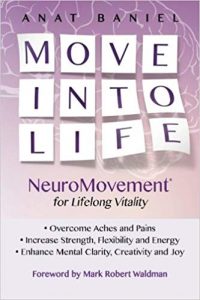
The next one is the variations. I talked a lot about variations already but you generate variations. You generate differences. My father, one of his inventions at the beginning of the startup, they had a problem in the production, a serious problem. My first book came out, Move Into Life, and I sent it to him. He calls me a few days later and said, “You know? I’m sitting in front of my computer trying to solve this problem. Two hours and I just couldn’t get the solution,” and he said, “and then I remember your variation chapter. I decided on purpose to write down and go through solutions that I knew in that time were not going to work, but I still decided to do it as a variation,” he said, “and in 10 minutes I had the solution.”
Very cool.
The next one is enthusiasm. Enthusiasm is not hoo-ra-ra-ra-ra-rah, but it’s internally when you observe in yourself or in another person. For me, I came up with it because of my work with children and the parents who are in their room. I discovered that when the parents are seeing the child shifting a bit, not like from not being able to talk the talk, but small shifts of things that they couldn’t do before, they feel happy. They feel hopeful, they like what they see, the child learns much faster. If the parent either doesn’t say at all but especially if they’re dissatisfied, because it’s not big enough or fast enough, the child stops changing as much.
I could see in the same child with two different parents, the dad, and the mom. One had one inclination, the other one had the other inclination. So much so that I asked one of the parents for two years—it was a child with very serious issues—to come and bring the child. Until the child got well enough are the parents could start feeling happy about the changes.
When you do the same thing over and over again, the brain gets very habituated. Click To TweetThat’s about ourselves. You train in the gym and you want this, you want that. How about you back off internally and you just start going like, “That was cool. I move two degrees more to the left. Whatever. It’s a difference. I feel different.”
We are so stingy in general. I called it the generosity of spirit. How about we celebrate even when it’s not what it’s supposed to be in your mind kind of thing? It’s very powerful because the brain goes like, “Oh, good thing. Let me keep it.” That’s the emotional impact of what we retain and what we don’t.
The next one is flexible goals. Goals are really great. They organize us, they give us direction, but it’s goals because I’m thinking of goals as something I don’t know or haven’t achieved yet. If I’ve known how to do it or achieve it, it wouldn’t be one of my goals. I’d be doing it already.
The idea is I create a goal and then I make it very easy about getting there. That allows for any kind of experience, a movie that I see, something a friend said, whatever, to come in and inform the brain in the process of moving towards the goal. It may take an hour, it may take three months. It may take five years because it depends on what goal you are doing.
Part of flexible goals is also being flexible of what your goal is because I’m sure you had experiences like that. As we decide what our goal is and we start moving there, we get more informed and say, “Wait a minute. I think I want to adjust the goal. I want to change it through or I want to change the goal altogether.” That’s flexible goals. Very powerful, I believe.

The next one is the learning switch. The learning switch is very important. The brain is either, at any given moment, in a learning mode or not. If you’re really tired, really hungry, if there’s something really scared you or whatever, your learning switch is not going to be on. If you’ve just spent intense time, a half an hour, 45 minutes, learning something really new, you stop. Take an hour, two hours, you do something else. Take a nap because the brain is not a machine. Again, it’s not a mechanical system. Even with mechanical things, sometimes you do have to wait for the glue to dry. The brain is to integrate because it can only differentiate from where it is. It can only move forward from the level it’s at. When we differentiate—I call it differentiating around the edges—we stay with it, we let it integrate, we find spontaneously things we do a little different, and then we move again, and then we learn again.
Of course, I came up with this idea, with the concept of a learning switch when I worked with the children. People just drill those poor children for two hours, six hours, eight hours. They try to make them crawl and I went like, “Stop. You shouldn’t do that because if you did it for 10, 15, 30 minutes and the child does not change, stop. If the child has changed, stop, because they need to integrate. If they didn’t work, try something else to do. Do something different.”
That’s the learning switch. Then imagination and dreams. Imagination is very powerful and useful for our brains and it’s well-known with athletes and things like that. Dreams are different from goals. Dreams is a bigger thing and I say that dreams call us from our future. It really gives us context to our life. Other people can call it our purpose, but it really gives context in which everything we do starts having a direction from the future because it’s a dream.
The last one is awareness. I see it as an action, not as a state of being. It’s something that we do, that our brain does, and we can learn to be much more capable and skillful in what I call being aware. It’s the highest and most remarkable function of the brain and it is also the glue of learning. When I learn something new, it’s not habituated. But if I become really aware and feel different, see and notice different aspects of the new thing, I can recreate it and groove it in a lot faster. These are the essentials and I hope I didn’t forget any of my babies.
Those are amazing and I can see all the attention, focus, love, and thoughtfulness that you put into developing your methodology. Are all these covered in your Move Into Life book?
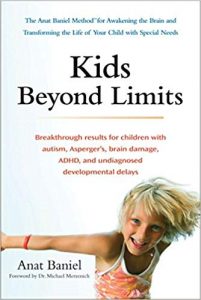
Yeah, they’re covered in Move Into Life and it’s covered in Kids Beyond Limits. So many people now know or have children that have issues, or anybody who’s interested in education, we have a school district in Canada that is thinking of bringing our work into their schools and training the teachers the use of the essentials. It has very wide applications. Also, I don’t know if it’s okay to do it in this scene but I do have a free ebook.
Great. Yeah. Where do our listeners go for that?
They go to anatbanielmethod.com and there’s the ebook. I have another website, neuromovement.com and I think it’s also there.
Okay, perfect. So those are good places for our listeners to go, not just for the ebook but also to work with you, to perhaps even go through the practitioner training, to become a practitioner of your NeuroMovement method.
Yeah. It’s a big deal and it’s once every two years. We open new training on September 21st of this year. I also offer workshops so people can experience the work, to see if they want to take the training. There are DVDs and streaming video movement programs. I do the work, I work in a team of teachers in Santa Fe, California, and I have hundreds of people that I trained, that worked all over the world, and they do really nice work. They can get on the website and find perhaps a practitioner in their town or nearby.
Amazing. All right. If you do take the practitioner training, the best way to learn something is to learn with the intention of teaching it to others or sharing it with others. That’s a great way to change your life – is to work on changing others.
Thank you, Stephan, for saying that because many of them come because they have kids they want to work with and at the end, they say they have one minute to say one thing about their experience being in the training. All of them say, “I thought I came for my job, my profession, my child, or this, or that,” and they say, “I realize the biggest beneficiary is me.”
One of the drivers of aging is habituation. Click To TweetYeah. Amazing. All right. Well, thank you, Anat, and thank you, listeners. Now, take advantage of that free ebook. Also, make some changes and start working on your brain, getting out of those well-worn grooves and the bad habituation, and work on elevating your brain and your body to new heights. We’ll catch you on the next episode of Get Yourself Optimized. This is your host, Stephan Spencer, signing off.
Important Links:
- Anat Baniel
- Facebook – Anat Baniel
- Twitter – Anat Baniel
- LinkedIn – Anat Baniel
- Youtube – Anat Baniel
- Whole Brain Body Fitness
- Move Into Life
- Kids Beyond Limits
- Power vs. Force
- Tim Hodges – previous episode
- Luther Cowden – previous episode
- Pete Egoscue – previous episode
Checklist of Actionable Takeaways










 About Anat Baniel
About Anat Baniel
Anat Baniel, founder of Anat Baniel MethodNeuroMovement, is the author of the bestselling book Move Into Life and Kids Beyond Limits. Her work is at the forefront of movement sciences and brain change providing breakthrough outcomes to athletes, musicians, those suffering from pain and injury and children with special needs.
Disclaimer: The medical, fitness, psychological, mindset, lifestyle, and nutritional information provided on this website and through any materials, downloads, videos, webinars, podcasts, or emails is not intended to be a substitute for professional medical/fitness/nutritional advice, diagnoses, or treatment. Always seek the help of your physician, psychologist, psychiatrist, therapist, certified trainer, or dietitian with any questions regarding starting any new programs or treatments, or stopping any current programs or treatments. This website is for information purposes only, and the creators and editors, including Stephan Spencer, accept no liability for any injury or illness arising out of the use of the material contained herein, and make no warranty, express or implied, with respect to the contents of this website and affiliated materials.
LOVED THIS EPISODE
Please consider leaving me a review with Apple, Google or Spotify! It'll help folks discover this show and hopefully we can change more lives!
Rate and Review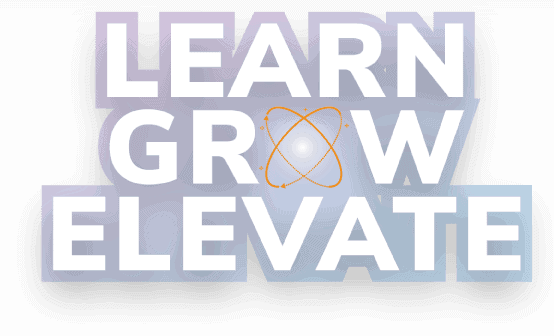
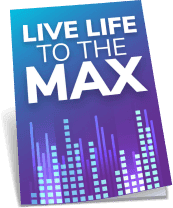






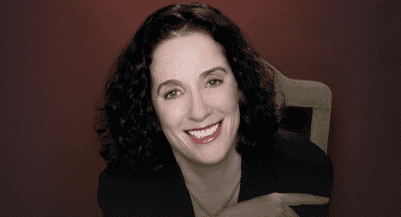
 About Anat Baniel
About Anat Baniel